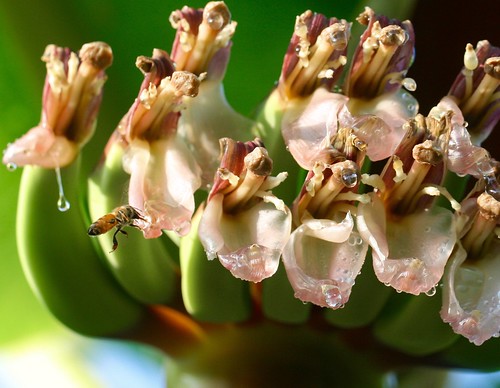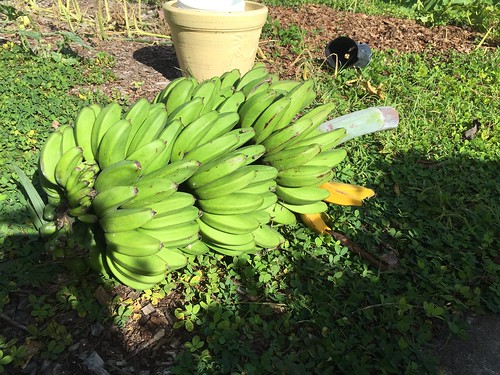We are now growing over 65 varieties of bananas - just a small portion of the approx. 1000 edible varieties grown throughout the world. The banana plant is an herb - not a tree. The bananas grown for edible fruit do not require any pollination. In fact, many do not have viable pollen.
Bananas are the perfect plant for those living in warm climates that want quick, reliable fruit.
The banana is a very versatile plant - the fiber can be used to make baskets, hats, paper and more. The leaves can be used to wrap food in before cooking over a fire or as plates.
 |
| Tilapia with fresh heart of palm cooked inside a banana leaf over a fire. |
The fruit can be used in soups, savory dishes, sweet deserts, or eaten raw.
 |
| Frozen bananas |
 |
| Fried bananas |
 |
| Angelica enjoying a maqueno banana at our home in Ecuador |
The nectar of banana flowers is very sweet - our honeybees enjoy it.
We are still waiting to taste the fruit of many varieties that we grow. I will be sure to post about each new variety as it fruits for us.
 |
| Ney Mannan Bananas |
While bananas are easy to grow, they also are susceptible to fungi, viruses, borers, and more. As we grow our bananas, we have seen which ones are resistant to these maladies.
 |
| Gipungusi Plantains |


































